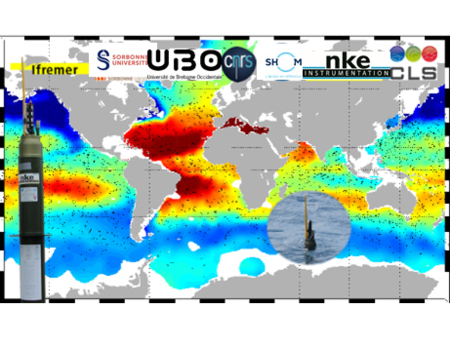Scientific applications
Argo aims to establish a global array of in situ measurements integrated with other elements of the climate observing system (in particular satellite observations) to:
- detect climate variability from seasonal to decadal scales and provide long-term observations of climate change in the oceans.
- provide essential data to constrain global and regional ocean analysis and forecasting models, to initialize seasonal and decadal forecasting ocean/atmosphere coupled models and to validate climate models.
- provide information necessary for the calibration and validation of satellite data.
One of Argo’s most important contributions so far is a huge improvement in the estimation of heat stored by the oceans. This parameters is a key factor to estimate the importance of the global warming, Argo data have been used to better understand global sea level rise (thermal dilation of the oceans).
Argo has also brought remarkable advances in ocean forecasting capability and will be critical for developing reliable seasonal to decadal climate predictions.
These evolutions are also needed for operational oceanography (Mercator Océan, Copernicus marine Environment Monitoring Service) and its applications.
Argo datas also contributed to bring a new idea about some research questions: in particular about surprising return of deep convection to the subpolar North Atlantic Ocean in winter that fill in the oceanic basins and about heat and water transport under hurricanes.







